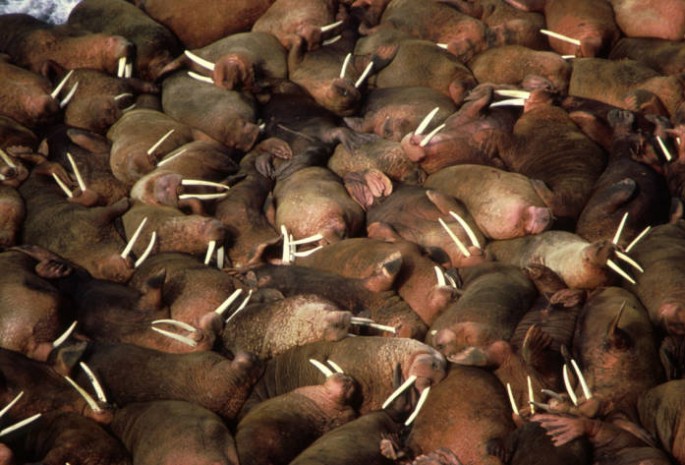Last week, a number of dead bodies of walruses were found on a northwest Alaska beach according to the U.S. Fish and Wildlife Service, where local officials believe that these deaths appear to be natural.
The carcasses were found near Point Lay in the same region where about 35,000 walrus were seen on the shores last September 2. A member of the U.S. Geological Survey had captured a photo of the dead bodies for the Fish and Wildlife Service.
The service is now analyzing the images to be able to determine if these carcasses are either old or new and to determine the age range of the dead walruses. An investigator from the service is yet to confirm this upon arriving at the beach.
Experts believe that foul play is not involved where the carcasses are still intact but there is no exact number yet from this incident.
These huge herds are also prone to a deadly stampedes when they are approached by a polar bear or a hunter or even a passing airplane. Young animals can be crushed underneath as adult walruses rush for safety into the ocean's water. The carcasses that were found comprise of mostly young ones reaching up to 130, that was counted after a stampede in Icy Cape, Alaska in 2009. However, the cause of deaths in Point Lay has not yet been determined.
With this in mind, the U.S. Attorney in Alaska will carry out an investigation of the 25 walruses found dead that was spotted in the image taken at Cape Lisburne, some 100 miles southwest of Point Lay.
An Air Force radar station is also apparently located in Cape Lisburne where personnel from the station reported the dead walruses and sent the images to the U.S. Fish and Wildlife Service. Photos revealed gruesome evidence of heads and tusks that are removed from some of the animals. To date, federal prosecutors still cannot comment on the case.
Walruses are now threatened more than ever by changing habitats and global warming as summer sea ice and polar ice caps are now receding beyond the continental shelf's shallower regions, meaning, the water is now too deep for walruses to feed on clams and snails found on the ocean floor.
Larger numbers of walruses seen in the region were first spotted at the Chuckchi Sea in 2007 where an estimated 35,000 walruses gathered as a herd near Point Lay last year and last September 2.



























